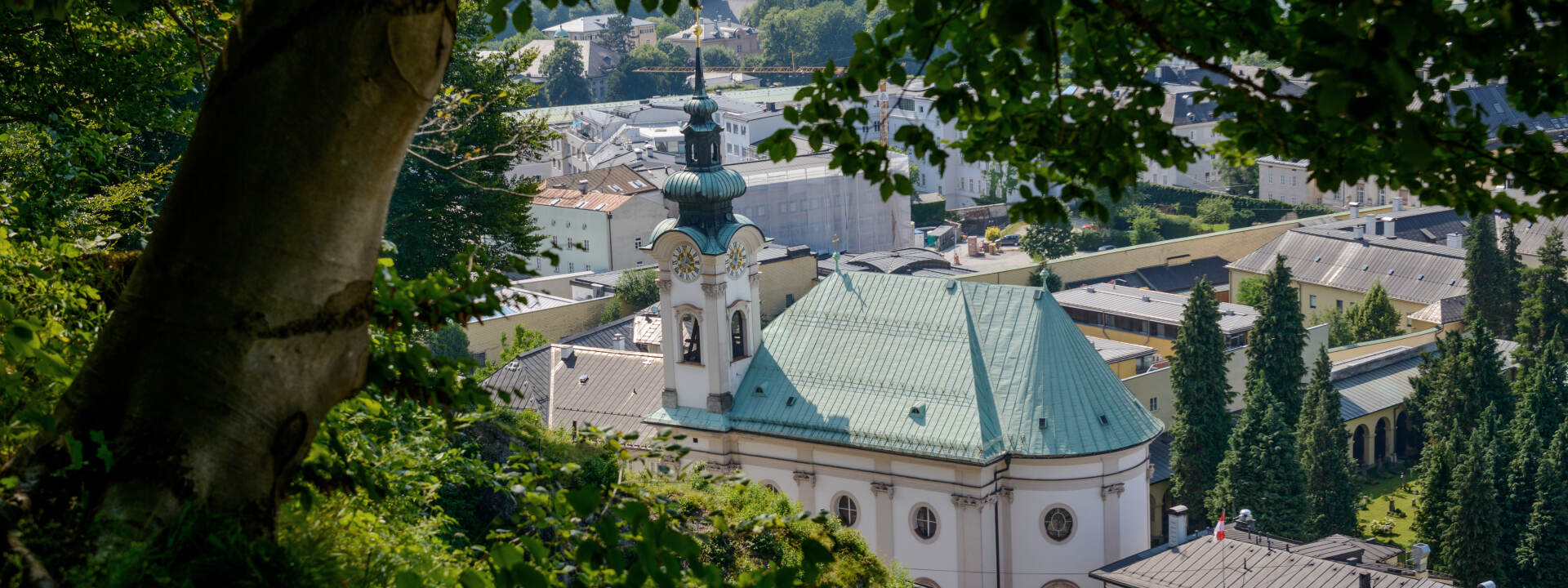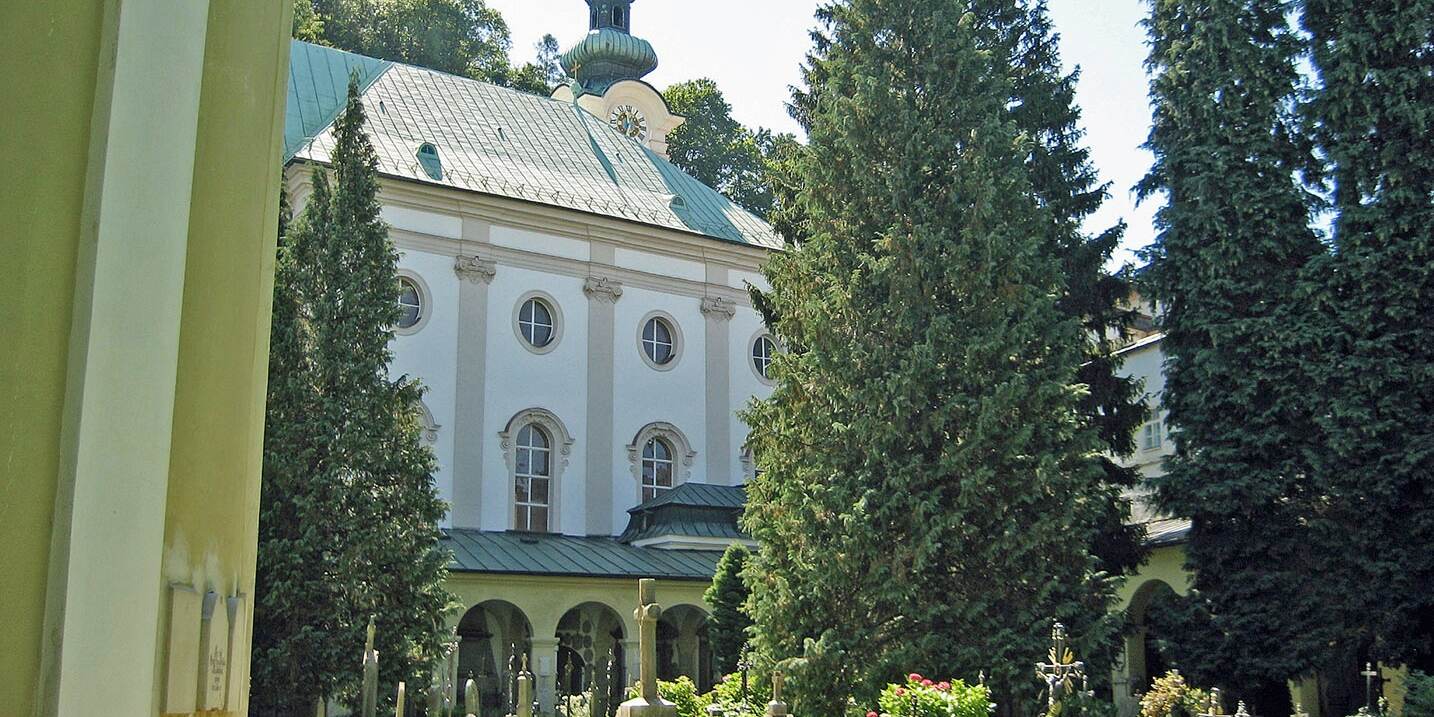
St. Sebastian Church
Visit the St. Sebastian Church in Salzburg
The history of St. Sebastian's Church can be traced to Archbishop Leonhard von Keutschach who had the church erected from 1505 to 1512. The deteriorating, late Gothic church, which ancient views of the city depict with a small tower and steep roof, was torn down in 1750 and replaced by a late Baroque colonnaded hall.
The reconstruction work was performed by Franz Anton Danreiter and the Tyrolese architect Kassian Singer. The magnificent Rokoko portal by Josef Anton Pfaffinger and the elaborate gate designed by Philipp Hinterseer in 1752 are of particular value. The high altar is decorated with a beautiful Madonna with Child, the work of Hans Waldburger dating back to 1611.
The devastating town fire in 1818 which destroyed large sectors of the town on the right bank of the river also burned parts of St. Sebastian's Church. The ceiling frescoes painted by Paul Troger and the high altar painting depicting St. Sebastian were completely destroyed.Renovation of the church in the style of the 19th century commenced in 1820. The Baroque paintings were replaced by works of contemporary artists and the confessional boxes modernized.
Restoration of the church commenced in 1991 in collaboration with the federal office for the preservation of ancient monuments. Work is expected to be completed in 1996 when the church should regain its former splendor.
The passage to the world-famous St. Sebastian's Cemetery has held the tomb of the famous physician Theophratus Bombastus von Hohenheim, also called "Paracelsus", since 1564 Prince Archbishop Wolf Dietrich von Raitenau had the cemetery built by Andrea Berteleto from 1795 to 1600 in the style of an Italian campo santo to replace the old cathedral cemetery.
Prominent Salzburg burghers and merchants' families as well as famous personalities have found their last resting place under the magnificent arcades of the cemetery: Mozart's father Leopold, Wolfgang's wife Constanze as well as her second husband, Georg Nikolas von Nissen, her aunt Genovefa von Weber, mother of the composer Carl Maria von Weber, as well as Elia Castello, builder of the Gabriel Chapel.The Gabriel Chapel with the mausoleum for Prince Archbishop Wolf Dietrich in the center of the cemetery is undoubtedly the most magnificent tomb. It was built after designs by Elia Costello and still bears witness to the authority and philosophy of the former sovereign.

